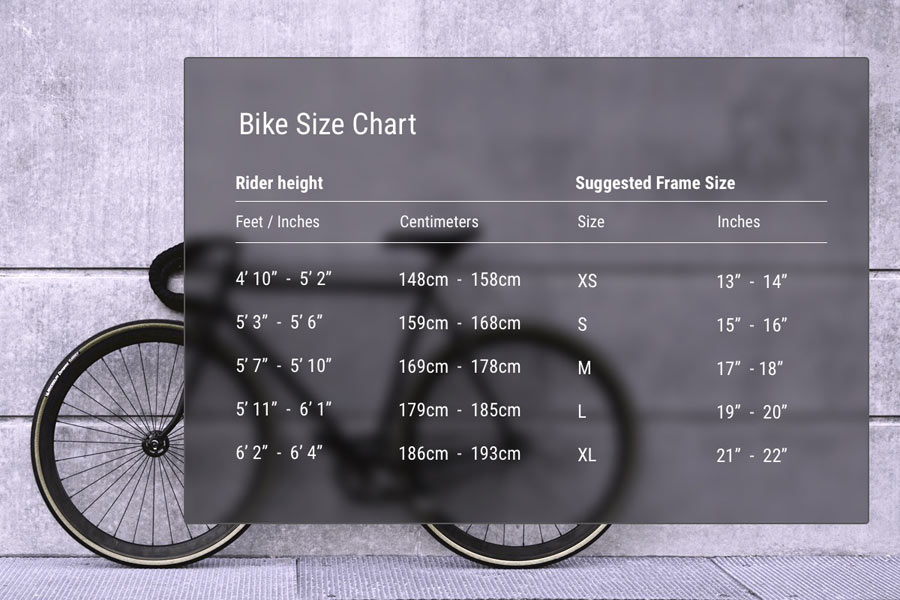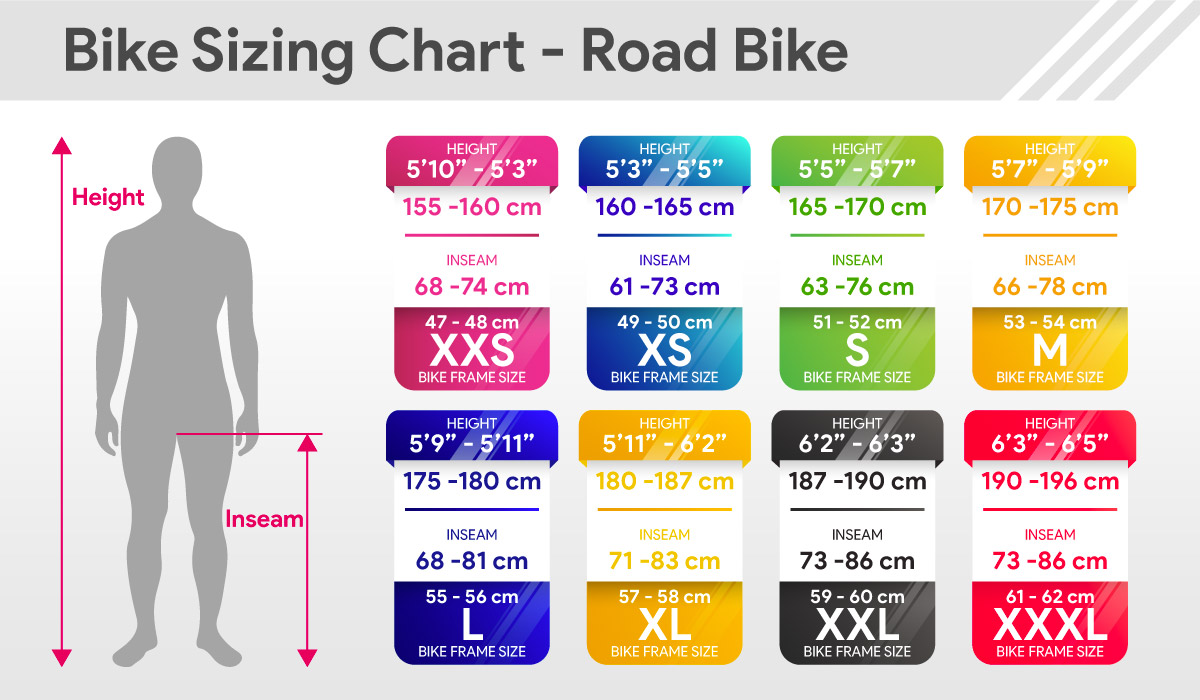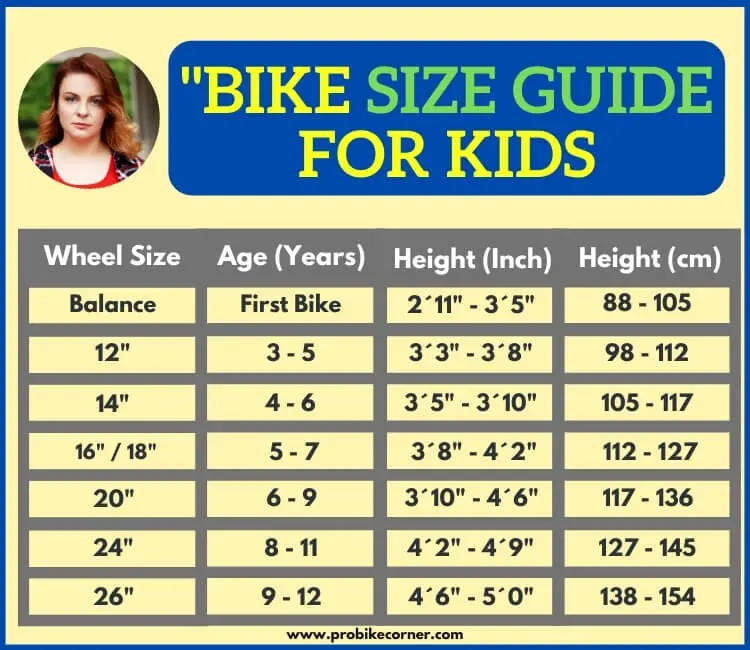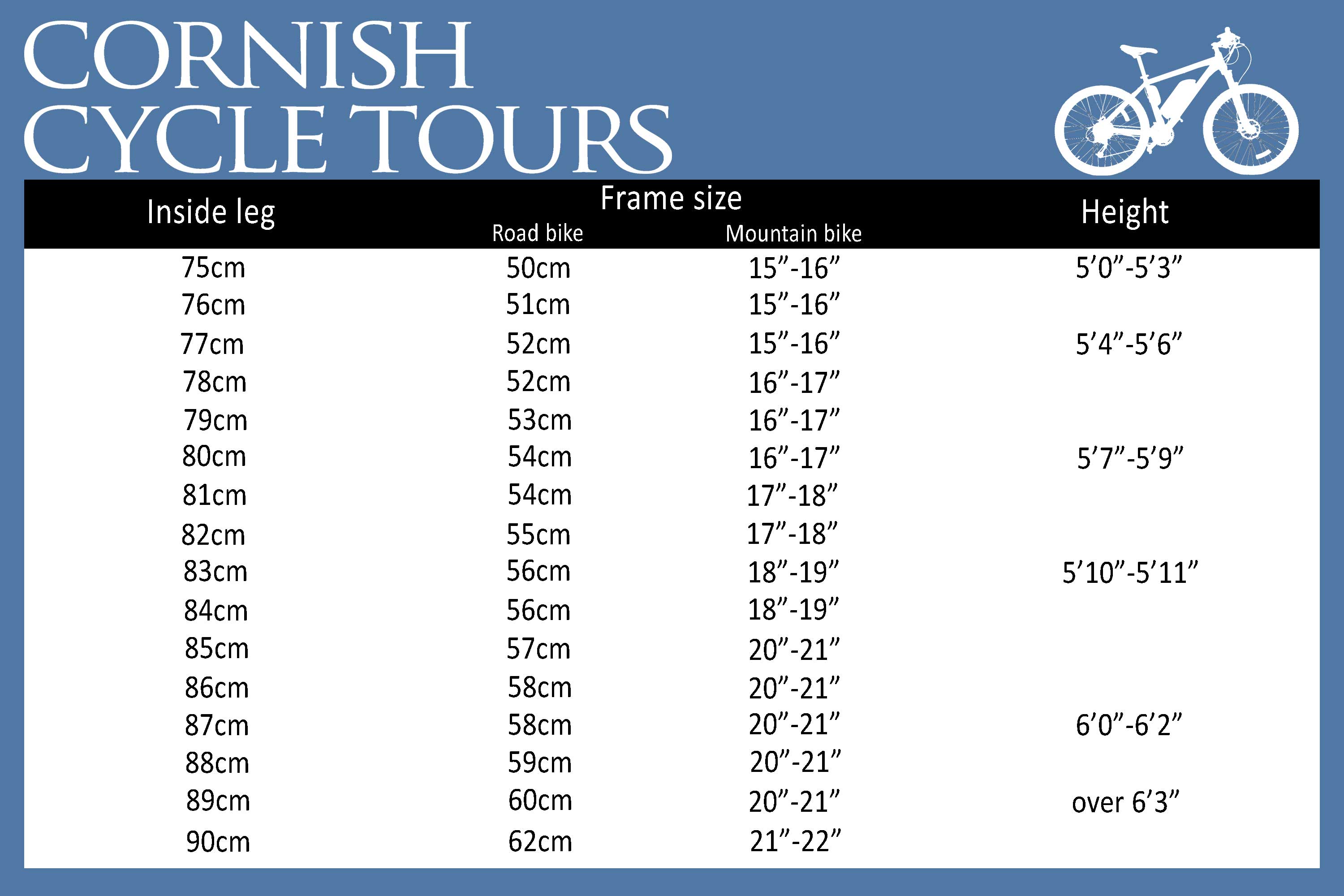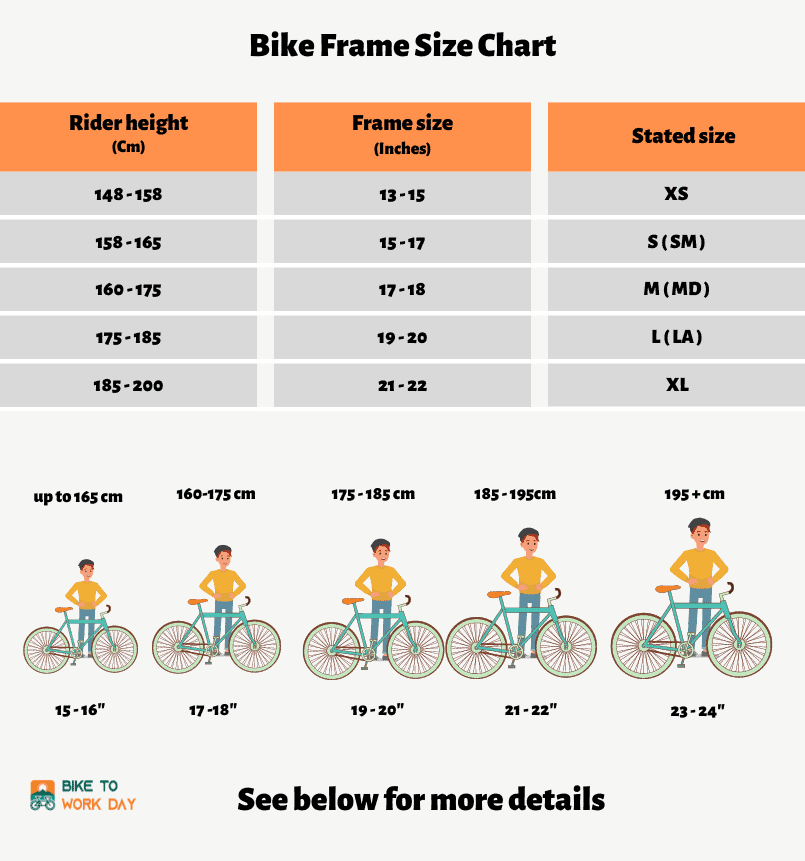Why Bike Size Matters: Avoiding Discomfort and Injury
Choosing the right bike size is crucial for a comfortable and enjoyable riding experience. A poorly fitting bike can lead to discomfort, injury, and decreased performance. When a bike is too small or too large, it can put strain on the body, particularly the back, neck, and knees. This can result in a range of issues, from mild discomfort to serious injuries, such as herniated discs, tendonitis, and chronic pain.
In addition to the physical risks, a bike that is the wrong size can also negatively impact performance. A bike that is too small may not provide enough power or efficiency, while a bike that is too large can be difficult to handle and maneuver. This can lead to frustration and disappointment, especially for riders who are new to cycling or looking to improve their skills.
So, what bike size do you need? The answer depends on a variety of factors, including your height, inseam, and riding style. In general, a bike that fits properly will allow you to maintain a comfortable riding position, with your legs almost fully extended and your back straight. However, the ideal bike size can vary significantly from person to person, and there is no one-size-fits-all solution.
To determine the right bike size, it’s essential to consider your body measurements and riding preferences. This may involve consulting with a professional bike fitter or using online size charts to find the best fit. By taking the time to find the right bike size, you can ensure a comfortable and enjoyable riding experience, while also minimizing the risk of injury and improving your overall performance.
How to Measure Yourself for a Bike: A Step-by-Step Guide
To determine what bike size you need, it’s essential to take accurate body measurements. This will help you find a bike that fits comfortably and provides optimal performance. Here’s a step-by-step guide on how to measure yourself for a bike:
**Step 1: Measure Your Height**
Stand against a wall with your feet shoulder-width apart and your back straight. Measure the distance from the floor to the top of your head using a tape measure or a ruler. Record this measurement in inches or centimeters.
**Step 2: Measure Your Inseam**
Stand against a wall with your feet shoulder-width apart and your back straight. Place a book or a ruler between your legs, with one edge against the wall and the other edge against your crotch. Measure the distance from the floor to the top of the book or ruler using a tape measure or a ruler. Record this measurement in inches or centimeters.
**Step 3: Measure Your Arm Length**
Stand with your arms relaxed at your sides. Measure the distance from the center of your back (at the base of your neck) to the tip of your middle finger using a tape measure or a ruler. Record this measurement in inches or centimeters.
**Step 4: Consider Your Riding Style**
Think about your riding style and preferences. Do you prefer a more upright riding position or a more aggressive, aerodynamic position? This will help you determine the ideal bike size and type for your needs.
By taking these measurements and considering your riding style, you’ll be able to determine what bike size you need and find a bike that fits comfortably and provides optimal performance. Remember, the right bike size is essential for a comfortable and enjoyable riding experience, so take the time to get it right.
Understanding Bike Size Charts: A Breakdown of the Numbers
Bike size charts can be overwhelming, especially for those new to cycling. With so many different types of bikes and sizes to choose from, it’s essential to understand how to read bike size charts to find the perfect fit. In this section, we’ll break down the different types of bike size charts and explain how to interpret the numbers.
**Road Bike Size Charts**
Road bike size charts typically use a combination of frame size and wheel size to determine the overall size of the bike. Frame sizes are usually measured in centimeters (e.g. 52cm, 54cm, 56cm), while wheel sizes are measured in inches (e.g. 700c, 650c). To determine your road bike size, you’ll need to consider your height, inseam, and arm length.
**Mountain Bike Size Charts**
Mountain bike size charts are similar to road bike size charts, but they often use a different measurement system. Mountain bike frame sizes are usually measured in inches (e.g. 15″, 17″, 19″), while wheel sizes are measured in inches (e.g. 26″, 27.5″, 29″). When choosing a mountain bike, you’ll need to consider your height, inseam, and arm length, as well as your riding style and preferences.
**Hybrid Bike Size Charts**
Hybrid bike size charts are a combination of road and mountain bike size charts. They often use a combination of frame size and wheel size to determine the overall size of the bike. When choosing a hybrid bike, you’ll need to consider your height, inseam, and arm length, as well as your riding style and preferences.
**How to Read Bike Size Charts**
When reading bike size charts, it’s essential to consider your body measurements and riding style. Look for charts that provide a range of sizes and measurements, and use the following tips to determine your ideal bike size:
- Consider your height and inseam to determine your ideal frame size.
- Consider your arm length and riding style to determine your ideal wheel size.
- Look for charts that provide a range of sizes and measurements to ensure the best fit.
By understanding how to read bike size charts, you’ll be able to find the perfect fit for your needs and preferences. Remember, the right bike size is essential for a comfortable and enjoyable riding experience, so take the time to get it right.
Bike Types and Sizes: What You Need to Know
When it comes to choosing the right bike size, it’s essential to consider the type of bike you’re looking for. Different types of bikes have different size ranges and considerations, so it’s crucial to understand these differences before making a purchase. In this section, we’ll break down the different types of bikes and their corresponding size ranges.
**Road Bikes**
Road bikes are designed for speed and efficiency on paved roads. They typically have a more aggressive riding position and a narrower tire width. When choosing a road bike, consider the following size ranges:
- XS: 5’2″-5’6″ (157-168 cm)
- S: 5’7″-5’11” (170-180 cm)
- M: 6’0″-6’2″ (183-188 cm)
- L: 6’3″-6’5″ (191-196 cm)
- XL: 6’6″ and above (198 cm and above)
**Mountain Bikes**
Mountain bikes are designed for off-road riding and typically have a more upright riding position and a wider tire width. When choosing a mountain bike, consider the following size ranges:
- XS: 5’2″-5’6″ (157-168 cm)
- S: 5’7″-5’11” (170-180 cm)
- M: 6’0″-6’2″ (183-188 cm)
- L: 6’3″-6’5″ (191-196 cm)
- XL: 6’6″ and above (198 cm and above)
**Hybrid Bikes**
Hybrid bikes are a combination of road and mountain bikes, designed for commuting and recreational riding. When choosing a hybrid bike, consider the following size ranges:
- XS: 5’2″-5’6″ (157-168 cm)
- S: 5’7″-5’11” (170-180 cm)
- M: 6’0″-6’2″ (183-188 cm)
- L: 6’3″-6’5″ (191-196 cm)
- XL: 6’6″ and above (198 cm and above)
**Electric Bikes**
Electric bikes are designed for commuting and recreational riding, with the added assistance of an electric motor. When choosing an electric bike, consider the following size ranges:
- XS: 5’2″-5’6″ (157-168 cm)
- S: 5’7″-5’11” (170-180 cm)
- M: 6’0″-6’2″ (183-188 cm)
- L: 6’3″-6’5″ (191-196 cm)
- XL: 6’6″ and above (198 cm and above)
By understanding the different types of bikes and their corresponding size ranges, you’ll be able to find the perfect fit for your needs and preferences. Remember, the right bike size is essential for a comfortable and enjoyable riding experience, so take the time to get it right.
Real-World Examples: Bike Size Recommendations for Popular Models
Now that we’ve discussed the importance of choosing the right bike size and how to measure yourself for a bike, let’s take a look at some real-world examples of popular bike models and their corresponding size recommendations.
**Trek Domane**
The Trek Domane is a popular road bike known for its comfort and versatility. When choosing a Trek Domane, consider the following size recommendations:
- XS: 5’2″-5’6″ (157-168 cm)
- S: 5’7″-5’11” (170-180 cm)
- M: 6’0″-6’2″ (183-188 cm)
- L: 6’3″-6’5″ (191-196 cm)
- XL: 6’6″ and above (198 cm and above)
**Specialized Roubaix**
The Specialized Roubaix is a popular endurance road bike known for its comfort and performance. When choosing a Specialized Roubaix, consider the following size recommendations:
- XS: 5’2″-5’6″ (157-168 cm)
- S: 5’7″-5’11” (170-180 cm)
- M: 6’0″-6’2″ (183-188 cm)
- L: 6’3″-6’5″ (191-196 cm)
- XL: 6’6″ and above (198 cm and above)
**Giant TCR**
The Giant TCR is a popular road bike known for its performance and versatility. When choosing a Giant TCR, consider the following size recommendations:
- XS: 5’2″-5’6″ (157-168 cm)
- S: 5’7″-5’11” (170-180 cm)
- M: 6’0″-6’2″ (183-188 cm)
- L: 6’3″-6’5″ (191-196 cm)
- XL: 6’6″ and above (198 cm and above)
By considering these real-world examples, you’ll be able to find the perfect fit for your needs and preferences. Remember, the right bike size is essential for a comfortable and enjoyable riding experience, so take the time to get it right.
Test Ride Before You Buy: Ensuring the Perfect Fit
Once you’ve narrowed down your options and found a bike that seems like the perfect fit, it’s essential to test ride it before making a purchase. Test riding a bike allows you to evaluate the fit and feel of the bike, ensuring that it’s comfortable and suitable for your needs.
**Why Test Riding is Important**
Test riding a bike is crucial for several reasons:
- Ensures a comfortable fit: Test riding a bike allows you to evaluate the fit and feel of the bike, ensuring that it’s comfortable and suitable for your needs.
- Helps you find the perfect size: Test riding a bike helps you determine if the bike is the right size for you, taking into account factors such as your height, inseam, and arm length.
- Allows you to evaluate the bike’s performance: Test riding a bike gives you the opportunity to evaluate its performance, including its handling, braking, and acceleration.
**Tips for Test Riding a Bike**
When test riding a bike, keep the following tips in mind:
- Wear comfortable clothing: Wear comfortable clothing and shoes that are suitable for cycling.
- Adjust the bike to fit you: Adjust the bike to fit your body, including the saddle height, handlebar height, and brake lever position.
- Ride on different terrain: Ride the bike on different terrain, including hills, flats, and rough roads, to evaluate its performance and handling.
- Pay attention to comfort: Pay attention to how comfortable the bike feels, including the saddle, handlebars, and pedals.
By test riding a bike, you can ensure that you find the perfect fit and make an informed purchasing decision. Remember, the right bike size is essential for a comfortable and enjoyable riding experience, so take the time to get it right.
Common Mistakes to Avoid When Choosing a Bike Size
When choosing a bike size, there are several common mistakes to avoid. By being aware of these mistakes, you can ensure that you find the perfect fit and avoid discomfort, injury, and decreased performance.
**Relying Too Heavily on Online Size Charts**
While online size charts can be a useful guide, they should not be the only factor in determining your bike size. Everyone’s body is different, and online size charts may not take into account your specific measurements and preferences.
**Neglecting to Consider Personal Preferences**
When choosing a bike size, it’s essential to consider your personal preferences, including your riding style, comfort level, and performance goals. Don’t just rely on a size chart or a salesperson’s recommendation – take the time to think about what you want and need from your bike.
**Not Considering the Type of Bike**
Different types of bikes have different size ranges and considerations. For example, road bikes tend to be smaller and more aggressive than mountain bikes, while hybrid bikes are often larger and more upright. Make sure to consider the type of bike you’re looking for and its specific size range.
**Not Test Riding the Bike**
Test riding a bike is essential to ensuring the perfect fit. Don’t just rely on a size chart or a salesperson’s recommendation – take the bike for a spin and see how it feels. Pay attention to comfort, performance, and handling, and don’t be afraid to ask for adjustments or modifications.
By avoiding these common mistakes, you can ensure that you find the perfect bike size for your needs and preferences. Remember, the right bike size is essential for a comfortable and enjoyable riding experience, so take the time to get it right.
Conclusion: Finding Your Ideal Bike Size for a Comfortable Ride
Choosing the right bike size is crucial for a comfortable and enjoyable riding experience. By following the steps outlined in this guide, you can ensure that you find the perfect fit for your needs and preferences.
Remember, the right bike size is essential for avoiding discomfort, injury, and decreased performance. Don’t rely too heavily on online size charts or neglect to consider your personal preferences. Instead, take the time to measure yourself, understand bike size charts, and test ride a bike before purchasing.
By taking the time to find your ideal bike size, you can enjoy a comfortable and enjoyable riding experience. Whether you’re a seasoned cyclist or just starting out, the right bike size can make all the difference. So, what bike size do you need? Take the time to find out, and start enjoying the many benefits of cycling today!


